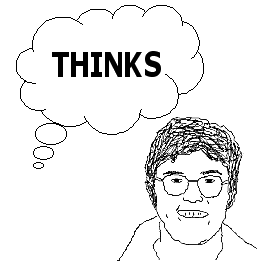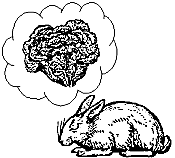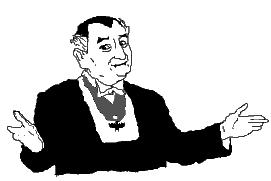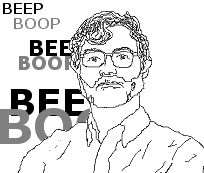
We have become used to hearing that novel theories of quantum mechanics might somehow account for consciousness. A theory which invokes only common or garden electromagnetism seems refreshingly simple by comparison – almost naively simple at first sight. But such is the hypothesis put forward by Susan Pockett in her book ‘The Nature of Consciousness’. The hypothesis can be briefly stated – ‘consciousness is identical with certain spatiotemporal patterns in the electromagnetic field’ .
The original inspiration for the theory apparently lies in the sense of cosmic oneness described in Hinduism and (rather an unexpected choice) Plato. Pointing out that the ancients had some handy ideas about atoms, Pockett suggests we could similarly look for ancestral wisdom as a starting point for an enquiry into consciousness. One possible clue, according to her, is that one can find in Hinduism (and Plato) the idea of a fundamental underlying unity, a universal consciousness. I don’t think anyone would have argued very much if she had claimed it was a common feature of mystical experience in virtually all religions, actually. This mystical element is clearly important to her, since it is brought back in to round off the book’s conclusion.
 Oh great. Good to know we’re dealing with hard science again.
Oh great. Good to know we’re dealing with hard science again.
Well, actually we are. If you want scrupulous quotation of authoritative empirical evidence, you won’t be disappointed here. The theory may be mystically inspired, but being a practical New Zealander, brought up, as she says, to believe any problem can be solved with baler twine, Pockett quickly gives it a more concrete form. This universal consciousness, she asks – doesn’t that sound a bit like some kind of field? If consciousness were some kind of electromagnetic effect, it could be part of the universal electromagnetic field, and hence genuinely part of a cosmic unity. Now, you wouldn’t want it to lose its separate existence altogether, or even leak across to other people in the form of telepathy (at least, not obviously), but that’s OK. If we were talking about very low frequency fluctuations, in the 0-100 Hz range, they wouldn’t propagate very far and would remain pretty much isolated, barring the kind of jolt to the brain which would have significant physical effects in any case.
Is there any reason to think that the brain might work at this kind of frequency, and that if it does, that the relevant patterns vary in a way that matches the variation of conscious experience?
Before we can consider the match with conscious states, we need to be a bit clearer about the kind of consciousness we mean. Pockett is only talking about the kind of subjective, phenomenal consciousness we almost certainly share with animals – qualia, in fact, not articulate, decision-making, reflective consciousness. She identifies three different states of consciousness – waking, dreaming, and dreamless sleep – and suggests there might be grounds for accepting another – a half-way state between waking and sleep which she identifies with the kind of meditative trance mystics go in for. It appears that EEG evidence does indeed show various wave patterns at suitable frequencies for all three (or four) of these conscious states. So far so good.
The next step is to examine the evidence for covariance between these EEG patterns and conscious sensations. It’s characteristic of Pockett’s agreeably down-to-earth style that smell, for once, is tackled first and gets a fair share of the attention, along with hearing and vision. These chapters form an interesting survey in their own right, though the details don’t matter much from our point of view. Covariance turns out to be relatively easy to establish in simple organisms, but in human beings rather a lot of processing of the relevant data is required. Nevertheless, I think most people would be happy to accept the broad conclusion that there is, indeed, evidence for covariance in all three senses.
Covariance, of course, is not enough in itself to establish the truth of Pockett’s hypothesis. Most people, as she recognises, would be inclined to say that the relationship between conscious sensations and electromagnetic patterns is due to the fact that they both arise from the same patterns of neural activity. I don’t think Pockett has a knock-down argument against this one: essentially she thinks it is much easier to conceive of consciousness as ‘just being’ a shimmering electromagnetic field than ‘just being’ patterns of neural activity – she even seems to suggest that the latter view tends towards dualism – but I’m not convinced.
So why should we believe in the hypothesis? I think there are three main points. One is the ‘mystic unity’ argument. To find this appealing, you have to believe in some kind of cosmic unity of consciousness to begin with, of course. But even if you do, I’m not sure the theory backs it up as strongly as Pockett suggests. At one point she sums it up quite accurately by saying that the ‘spots’ of consciousness within the overall cosmic field are like the red spots on a spotted handkerchief, which, in a sense, confer the quality of redness on the handkerchief. But that doesn’t, except in a stretched or metaphorical sense, make it a red handkerchief or unite the spots in a handkerchief-wide redness. Pockett herself has to argue for isolation of individual consciousnesses in order to defend herself against suggestions that if her theory were true, we should all be telepathic, or disrupted by electromagnetic events around us. I don’t, ultimately, find myself tempted by Pockett’s suggestion that her ideas, similarly, mean that the Cosmos itself is conscious.
The second point is a claim that the theory solves the binding problem – how conscious experience appears unified although the data from different sense organs makes its way into the brain at different times. If everything feeds into a single overall electromagnetic pattern, unity is guaranteed. This is a tempting idea, and a real prize if it worked. I think in the final analysis it underrates what we already know about the importance of neural events to sensory experiences. Since the theory only deals with qualia-style consciousness, it also leaves us with a problem on our hands about how sensory data feed into the other, cogitative form of consciousness. Nevertheless, I don’t think the idea that electromagnetic effects are relevant here can be entirely dismissed.
The third, and most startling point is that if Pockett is right, it is possible in principle to recreate the patterns which constitute conscious experience without a brain at all. Conscious computers are the least of it – if this is right you can generate a conscious experience of, say, the colour orange, in empty space. Pockett presumes that if someone’s brain were moved to coincide with such a floating experience, the owner of the brain would indeed ‘have’ that experience. If Pockett could indeed find a practical way of ‘beaming’ chosen experiences into someone’s mind (without, presumably, the need to know any details about the particular brain involved) it would be a most dramatic vindication.
I’m not holding my breath, though – it just seems unlikely that the electromagnetic aspect of the brain could ever be so thoroughly divorced from the neural activity. This touches on a basic problem with the theory which comes out in a number of different ways. One of the objections discussed and dismissed in the book is that electromagnetic fields can’t do computation. Now, as a matter of fact I think the objection, as stated, is on dubious grounds anyway. It isn’t clear to me that the kind of consciousness under discussion – qualia, subjective experience – is meant, by those who espouse it, to be computational anyway. But there is, I think, a problem about causal relations in the electromagnetic theory. It seems a little odd to think of electromagnetic patterns causing other electromagnetic patterns without physical objects – neurons, in fact – playing a role somewhere. The implication is either that some compromise with the neural perspective is needed (I think there are a number of reasonable options along these lines), or that the kind of consciousness under discussion is epiphenomenal – has no causal relevance. This latter view is, of course, virtually the orthodox one among qualists, but it involves considerable difficulty.
Pockett herself published a paper in the JCS recently declaring for epiphenomenalism, though whether she means the (indefensible in my view) hard philosophical version, or the unproblematic psychological version is still, I think, open to discussion.
I’m not convinced, but pending the arrival of an electromagnetic conscious-experience-synthesising machine, I think the hypothesis at least remains among the small and praiseworthy company of ideas about consciousness which are rational, clear, and in principle testable.
 Ah – excuse me, but doesn’t it miss the whole point of mystical religious experience (in a typically flat-footed Western materialist way) to explain it as being a lot of radio waves? Isn’t transcendence of the physical something to do with it…?
Ah – excuse me, but doesn’t it miss the whole point of mystical religious experience (in a typically flat-footed Western materialist way) to explain it as being a lot of radio waves? Isn’t transcendence of the physical something to do with it…?



 I mentioned Dan Lloyd’s book “Radiant Cool” earlier. As I suggested then, linkages between philosophy and literature are not exactly unknown, but Lloyd’s is certainly the only book I know which splits neatly between a story in the front half and some really heavyweight stuff at the back.
I mentioned Dan Lloyd’s book “Radiant Cool” earlier. As I suggested then, linkages between philosophy and literature are not exactly unknown, but Lloyd’s is certainly the only book I know which splits neatly between a story in the front half and some really heavyweight stuff at the back.